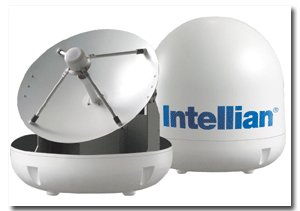|
|
 |
Knowledge Is Key
For Intelligent Decisions
Satellite Logic is a leading,
authoritative source of information in
the Satellite Industry. Located in the
heart of the Silicon Valley, Satellite
Logic provides one of the most
valuable and comprehensive
knowledge bases on the Satellite
market! This is a primary Worldwide
information center which enables our
clients to analyze, evaluate, inquire
and select their best tailored
solutions. Our company sets the
industry standards for targeted
buying leads, reflecting a dramatic
advance over traditional marketing
solutions.
|
|
|
 |

Satellite TV system means TV broadcast delivered by way of orbiting
communications satellites located 37,000 km above the earth's surface.
The Satellite TV system, like other communications relayed by satellite,
starts with a transmitting satellite antenna located at an uplink facility.
Uplink satellite dishes are directed toward the satellite that its signals
will be transmitted to, and are very large, as much as 9 to 12 meters
(30 to 40 feet) in diameter. The larger the satellite dish, the more
accurate positioning and improved signal reception at the satellite. The
satellite TV signals is transmitted to devices located on-board the
satellite called transponders, which retransmit the satellite signal back
towards the Earth at a different frequency.
Unlike earlier programming, the provider's broadcast is completely digital,
which means it has much better picture and sound quality (see How
Digital Television Works for details). Early satellite television was
broadcast in C-band radio -- radio in the 3.7-gigahertz (GHz) to 6.4-GHz
frequency range. Digital broadcast satellite transmits programming in
the Ku frequency range (11.7 GHz to 14.5 GHz ).
The satellite signal, quite weak after traveling through space, is collected
by a parabolic receiving dish, which reflects the weak signal to the dish's
focal point and is received, down-converted to a lower frequency band
and amplified by a device called a low-noise block down converter, or
LNB.
The satellite TV signal, now amplified, travels to a satellite TV receiver
box through coaxial cable (RG-6 or RG-10; cannot be standard RG-59)
and is converted by a local oscillator to the L-band range of frequencies
(approximately). Special on-board electronics in the receiver box help
tune the signal and then convert it to a frequency that a standard
television can use.
Satellite TV systems in the US are mainly dominated by two companies,
Dish Network and DirecTV. If you would like to have a satellite TV system
in your home, your choices are mostly limited to the satellite TV
packages offered by either one Dish Network or DirecTV.

The components of the satellite TV system comprise five major elements
involved in a direct to home (DTH) or direct broadcasting (DBS) operation:
the programming source, the broadcast center, the satellite, the satellite
dish and the receiver.
The programming sources are simply the channels that provide
programming for broadcast. The provider doesn't create original
programming itself; it pays other companies (HBO or ESPN for example)
for the right to broadcast their content via satellite. In this way, the
provider is kind of a broker between the client and the actual
programming sources.
The broadcast center is the central hub of the system. At the broadcast
center, the TV provider receives signals from various programming
sources and beams a broadcast signal to satellites in geosynchronous
orbit.
The satellites receive the signals from the broadcast station and
rebroadcast them to Earth. The viewer's dish picks up the signal from
the satellite (or multiple satellites in the same part of the sky) and
passes it on to the receiver in the viewer's house. The receiver then
processes the signal and passes it on to a standard TV.
Once connected, the focus of the satellite TV systems moves to the
programming phase. Satellite TV providers get programming from two
major sources: national turnaround channels (such as HBO, ESPN and
CNN) and various local channels (the ABC, CBS, Fox, NBC and PBS
affiliates in a particular area).
Turnaround channels usually have a distribution center that beams their
programming to a geosynchronous satellite. The broadcast center uses
large satellite dishes to pick up these analog and digital signals from
several sources.
Most local stations don't transmit their programming to satellites, so the
provider has to get it another way. If the provider includes local
programming in a particular area, it will have a small local facility
consisting of a few racks of communications equipment. The equipment
receives local signals directly from the broadcaster through fiber-optic
cable or an antenna and then transmits them to the central broadcast
center.
The broadcast center converts all of this programming into a high-quality,
uncompressed digital stream. At this point, the stream contains a vast
quantity of data -- about 270 megabits per second (Mbps) for each
channel. In order to transmit the signal from there, the broadcast center
has to compress it. Otherwise, it would be too big for the satellite to
handle. In the next section, we'll find out how the signal is compressed.
But first you'll have to choose and subscribe to one of the major satellite
TV suppliers. You will need an active DirecTV or Dish Network account
and receiver in order to get connected. Also, you'll have to determine
where you will be using your satellite TV system so you can purchase
the proper equipment. You will need to make sure you have a power
source and a satellite dish. You can setup your system in the most
remote places but you need to be able to get a satellite signal and
power for the TV and satellite receiver.
|
|
|
|
